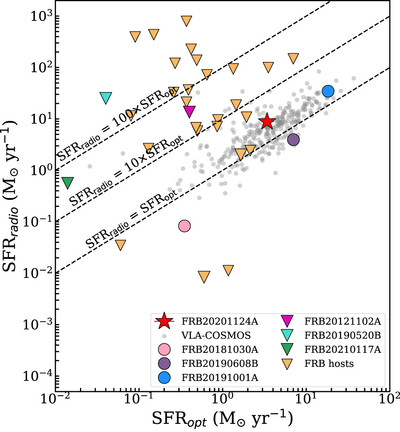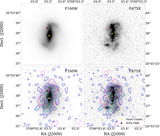Image Details

Caption: Figure 6.
Radio vs. optical-inferred SFRs for FRB 20201124A (red star), FRB 20181030A (pink circle; Bhardwaj et al. 2021b), FRB 20190608B (purple circle; Bhandari et al. 2020b), and FRB 20191001A (blue circle; Bhandari et al. 2020a). Triangles denote 3σ upper limits for FRB 20121102A (magenta; Marcote et al. 2017), FRB 20190520B (turquoise; Bhandari et al. 2023b), and FRB 20210117A (green; Bhandari et al. 2023a) and localized FRBs with existing radio limits (Law et al. 2022, 2023). Shown for comparison is a sample of radio-selected star-forming galaxies at z ≲ 0.3 from the VLA-COSMOS Source Catalog (Smolčić et al. 2017). Dashed lines indicate SFRradio = SFRopt, 10 × SFRopt, and 100 × SFRopt. FRB 20201124A is the FRB host with the most dust-obscured star formation.
Copyright and Terms & Conditions
© 2024. The Author(s). Published by the American Astronomical Society.








